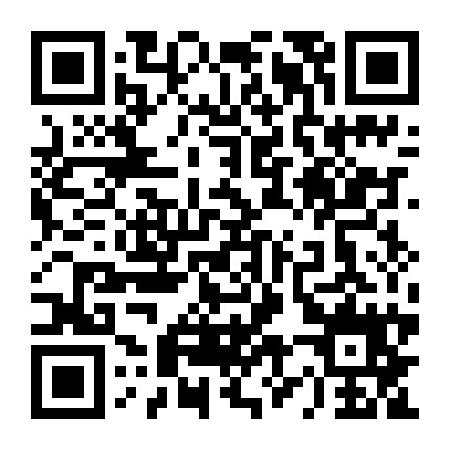Part Three Cloze Test (10%)
Directions: Read the following passage carefully and choose ONE best word for each numbered blank. Mark your answers on the ANSWER SHEET.
2009 was the worst year for the record labels in a decade. 31 was 2008, and before that 2007 and 2006. In fact, industry revenues have been 32 for the past 10 years. Digital sales are growing, but not as fast as traditional sales are falling. Maybe that’s because illegal downloads are so easy. People have been 33 intellectual property for centuries, but it used to be a time-consuming way to generate markedly 34 copies. These days, high-quality copies are 35 . According to the Pew Internet project, people use file-sharing software more often than they do iTunes and other legal shops.
I’d like to believe, as many of my friends seem to, that this practice won’t do much harm. But even as I’ve heard over the past decade that things weren’t 36 bad,that the music industry was moving to a new, better business model, each year’s numbers have been worse. Maybe it’s time to admit that we may never find a way to 37 consumers who want free entertainment with creators who want to get paid. 38 on this problem, the computational neuroscientist Anders Sandberg recently noted that although we have strong instinctive feelings about ownership, intellectual property doesn’t always 39 that framework. The harm done by individual acts of piracy is too small and too abstract. “The nature
of intellectual property,” he wrote,“ makes it hard to maintain the social and empathic 40 that keep(s) us from taking each other’s things. ”
31. A. As B. Same C. Thus D. So
32. A. stagnating B. declining C. increasing D. stultifying
33. A. taking B. robbing C. stealing D. pirating
34. A. upgraded B. inferior C. ineffective D. preferable
35. A. numerous B. ubiquitous C. accessible D. effortless
36. A. so B. this C. that D. much
37. A. satisfy B. help C. reconcile D. equate
38. A. Based B. Capitalizing C. Reflecting D. Drawing
39. A. match up with B. fill in C. fit into D. set up
40. A. constraints B. consciousness C. norm D. etiquette
Part Four Reading Comprehension (20%)
Directions: Each of the following four passages is followed by some questions or unfinished statements. For each question or unfinished statement,four answers are given. Read the passages carefully and choose the best answer to each question. Mark your choices on the ANSWER SHEET.
Passage One
Cancer has always been with us, but not always in the same way. Its care and management have differed over time, of course, but so, too, have its identity, visibility, and meanings. Pick up the thread of history at its most distant end and you have cancer the crab — so named either because of the ramifying venous processes spreading out from a tumor or because its pain is like the pinch of a crab’s claw. Premodem cancer is a lump, a swelling that sometimes breaks through the skin in ulcerations producing foul-smelling discharges. The ancient Egyptians knew about many tumors that had a bad outcome, and the Greeks made a distinction between benign tumors ( oncos) and malignant ones (carcinos). In the second century A. D. , Galen reckoned that the cause was systemic, an excess of melancholy or black bile, one of the body’s four “humors” brought on by bad diet and environmental circumstances. Ancient medical practitioners sometimes cut tumors out, but the prognosis was known to be grim. Describing tumors of the breast, an Egyptian papyrus from about 1600 B. C. concluded: “There is no treatment. ’’
The experience of cancer has always been terrible,but,until modem times, its mark on the culture has been light. In the past, fear coagulated around other ways of dying: infectious and epidemic diseases (plague, smallpox, cholera, typhus, typhoid fever) ; “apoplexies” (what we now call strokes and heart attacks) ; and, most notably in the nineteenth century, “consumption” (tuberculosis). The agonizing manner of cancer death was dreaded, but that fear was not centrally situated in the public mind — as it now is. This is one reason that the medical historian Roy Porter wrote that cancer is “the modem disease par excellence,” and that Mukherjee calls it “the quintessential product of modernity. ”
At one time, it was thought that cancer was a “disease of civilization” belonging to much the same causal domain as “neurasthenia” and diabetes, the former a nervous weakness believed to be brought about by the stress of modem life and the latter a condition produced by bad diet and indolence. In the eighteenth and nineteenth centuries, some physicians attributed cancer — notably of the breast and the ovaries — to psychological and behavioral causes. William Buchan’s wildly popular eighteenth-century text “Domestic Medicine” judged that cancers might be caused by “excessive fear, grief, religious melancholy”. In the nineteenth century, reference was repeatedly made to a “cancer personality”,and, in some versions, specifically to sexual repression. As Susan Sontag observed, cancer was considered shameful, not to be mentioned, even obscene. Among the Romantics and the Victorians, suffering and dying from tuberculosis might be considered a badge of refinement ; cancer death was nothing of the sort. “It seems unimaginable,” Sontag wrote, “to aestheticize” cancer.
41. According to the passage, the ancient Egyptians .
A. called cancer the crab
B. were able to distinguish benign tumors and malignant ones
C. found out the cause of cancer
D. knew about a lot of malignant tumors
42. Which of the following statements about the cancers of the past is best supported by the passage?
A. Ancient people did not live long enough to become prone to cancer.
B. In the past, people did not fear cancer.
C. Cancer death might be considered a badge of refinement.
D. Some physicians believed that one’s own behavioral mode could lead to cancer.
43. Which of the following is the reason for cancer to be called “the modern disease”?
A. Modem cancer care is very effective.
B. There is a lot more cancer now.
C. People understand cancer in radically new ways now.
D. There is a sharp increase in mortality in modem cancer world.
44. “Neurasthenia” and diabetes are mentioned because •
A. they are as fatal as cancer
B. they were considered to be “disease of civilization”
C. people dread them very much
D. they are brought by the high pressure of modern life
45. As suggested by the passage, with which of the following statements would the author most likely agree?
A. The care and management of cancer have developed over time.
B. The cultural significance of cancer shifts in different times.
C. Cancer’s identity has never changed.
D. Cancer is the price paid for modem life.
考博必备!历年真题及答案
考博精品好课,就选新东方!

 资料下载
资料下载
【必看】考博英语词汇10000例精解
发布时间:2020-09-02关注新东方在线服务号
回复【10000】免费获取
医学考博英语作文核心基础词汇整理
发布时间:2020-04-15关注新东方在线服务号
回复【医学考博】获取
医学考博英语阅读理解练习资料
发布时间:2020-04-15关注新东方在线服务号
回复【医学考博】获取
法学考博英语高频词汇word版
发布时间:2020-04-15关注新东方在线服务号
回复【医学考博】获取
医学博士英语统考真题及解析
发布时间:2019-12-26关注新东方在线服务号
回复【考博真题】获取
全国医学博士外语统一考试真题
发布时间:2019-12-26关注新东方在线服务号
回复【考博真题】获取
中科院考博英语复习备考实战经验分享
发布时间:2019-12-26关注新东方在线服务号
回复【考博经验】获取
中科院考博英语真题练习资料
发布时间:2019-12-26关注新东方在线服务号
回复【考博真题】获取

关注新东方在线服务号
关注新东方在线服务号,
免费获取考博必看干货资料

 推荐阅读
推荐阅读
沈阳工业大学2022年博士研究生招生考试英语真题B卷
来源 : 沈阳工业大学 2022-12-26 16:19:18 关键字 : 沈阳工业大学2022博士英语真题
沈阳工业大学2022年博士研究生招生考试英语真题A卷
来源 : 沈阳工业大学 2022-12-26 16:18:19 关键字 : 沈阳工业大学2022博士英语真题
沈阳工业大学2021年博士研究生招生考试英语真题B卷
来源 : 沈阳工业大学 2022-12-26 16:09:06 关键字 : 沈阳工业大学2021博士英语真题
沈阳工业大学2021年博士研究生招生考试英语真题试卷A卷
来源 : 沈阳工业大学 2022-12-26 16:07:31 关键字 : 沈阳工业大学2021博士英语真题
沈阳工业大学2020年博士研究生招生考试英语真题试卷
来源 : 沈阳工业大学 2022-12-26 16:04:42 关键字 : 沈阳工业大学2020年博士英语真题


 考博好课推荐
考博好课推荐
基础薄弱,备考迷茫,送纸质资料
价格 : ¥2280元
资深教师,教学简明,直接有效!
价格 : 0元
 资料下载
资料下载
关注新东方在线服务号
回复【10000】免费获取
关注新东方在线服务号
回复【医学考博】获取
关注新东方在线服务号
回复【医学考博】获取
关注新东方在线服务号
回复【医学考博】获取
关注新东方在线服务号
回复【考博真题】获取
关注新东方在线服务号
回复【考博真题】获取
关注新东方在线服务号
回复【考博经验】获取
关注新东方在线服务号
回复【考博真题】获取

 阅读排行榜
阅读排行榜
 相关内容
相关内容